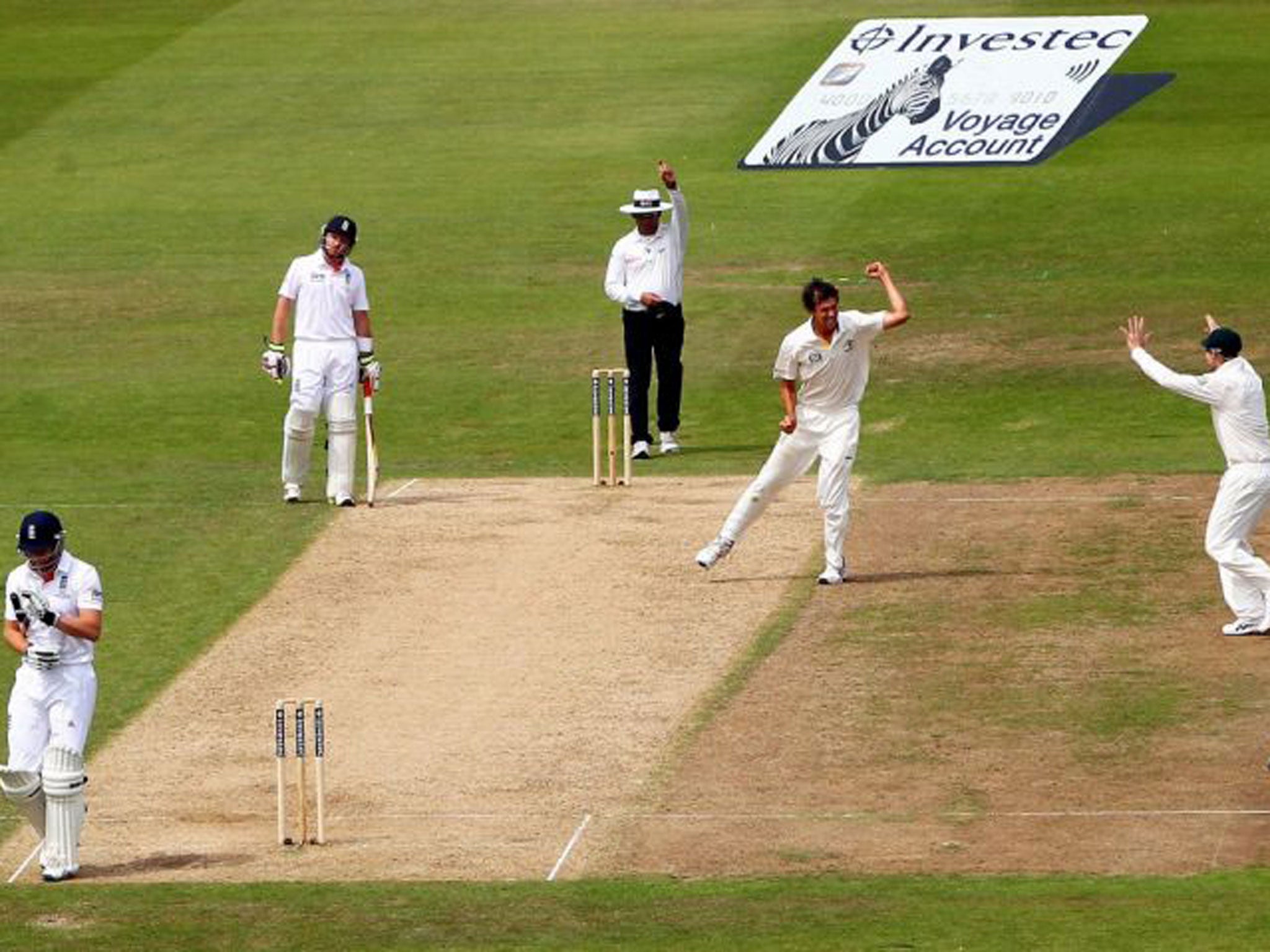Ashes 2013: There’s plenty to admire but jury is still out on Jonny Bairstow
England’s No 6 showed some glimpses but questions remain over his ability at top level

Was it the dismissal of a Test-class middle-order batsman? Jonny Bairstow pushed away from his body with hard hands, as the ball spun off the pitch, away from him, clipping the outside edge of his bat. Brad Haddin took the catch and that was that.
It was not a bad innings; a watchful, almost monkishly self-denying 62-ball 15. Bairstow, coming in after the removal of Alastair Cook (also by Ashton Agar) provided a willing partner for Ian Bell as England tried to recover from their two morning losses. Had he got himself out attacking – as Kevin Pietersen did before him and Matt Prior subsequently – he would certainly have been castigated in a way that they will not be.
But Bairstow did not do precisely what he needed to, what he has not quite fully done yet, which is to make it unambiguously clear to everyone that this is his stage and he fully belongs here.
This afternoon went the same way as most of Bairstow’s 15 Test innings of his career so far: some promise and a lot to admire but not obviously bestowed with the technical class that is a prerequisite at this level. The first innings at Trent Bridge was much the same. Bairstow, in fact, was England’s second-top scorer with a far more characteristically punchy 37, off 51 balls with seven fours.
He was re-building well on that first afternoon with Stuart Broad before he was interrupted by another technical flaw. Bairstow’s bottom-handed, closed-face style lends itself to his playing across the line and missing straight deliveries, as Mitchell Starc found out to his delight.
This was not a new discovery. Three times before in his year-long Test career he had been dismissed the same way – by Tino Best, Morne Morkel and Tim Southee. It points to a pattern, and not a secret one either.
As is the case for most young players, Bairstow relies on much faith and trust from the selectors. His record does not yet make a compelling case for his inclusion. After 15 Test innings there remains one piece of stand-out quality – a gutsy and defiant 95 at Lord’s against South Africa. Beyond that, there was a competent counterpart act at Headingley in May, as he and Joe Root put on a stirring 124 against New Zealand.
But none of it makes fully clear that Bairstow – who can no longer claim to be a fully unknown quantity – is good enough to be here for the foreseeable future. England are currently committed to this new Ashes batting order, with Joe Root moving up to open and Bairstow coming in at six.
But if, a few Tests down the line, Bairstow has still not yet convinced then England will have to find yet another answer to the post-Paul Collingwood No 6 conundrum. Since his retirement after the last Ashes series, England have tried Eoin Morgan, Joe Root, Ravi Bopara, Samit Patel and James Taylor there.
None of those had the desired effect, despite the success of Morgan and Bopara in short forms of the game. Taylor, who could claim to be the bright young future of English batting before Root or Bairstow, might be entitled to wonder about the distribution of chances to youngsters, his own example making clear that England are very capable of being ruthless with those they do not believe are at the required standard.
Perhaps the treatment of Taylor demonstrates that England will not give an indefinite number of chances to even promising youngsters. If they decide that Bairstow’s strength of personality does not outweigh his mixed technique, then they have to go through the whole search again. Bringing back the last custodian, Root, is surely implausible given the commitment to having him open with Cook. So England would have to look back, presumably to Bopara or Taylor, as they wonder who might be the eventual long-term replacement for Collingwood.
Batting orders are delicate balances and not everyone who should fit does. In the last home Ashes, the decision to try Jonathan Trott at three at The Oval turned out to be one of the best of recent years. Of the youngsters to be recently quickly promoted, Root is already rewarding the trust in all three forms.
But Bairstow’s future remains unclear and at Lord’s and Old Trafford he may have to exceed what he has shown so far if he is to continue.
Subscribe to Independent Premium to bookmark this article
Want to bookmark your favourite articles and stories to read or reference later? Start your Independent Premium subscription today.

Join our commenting forum
Join thought-provoking conversations, follow other Independent readers and see their replies